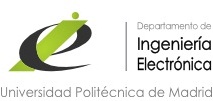Electronic Circuits (CELT)
DESCRIPTION OF THE COURSE
The aim of this course is to develop a practice of a system
complex analog-digital electronic starting with a description and a
basic specifications.
The course begins with a theoretical classes where students receive information
on decomposition in said system modules, the methods
convenient for design and recommendations for installation on the plate
insertion. Furthermore, in the above indicated classes are more procedures
suitable for detecting performance problems and their solution to
Throughout the development of the circuit.
During the course of the course, students will use the means available
laboratory B-043 for the development of the practice, with the
help of teachers. Some classes are regularly taught theoretical
short duration in the laboratory.
Finally, the student will have to write a memory circuit technique
performed.
SPECIFIC CONTENT
Block / Theme /
Chapter
Paragraph
Indicators
Related
two
Block 1:
Description
system
electronic
design
1.1 Description of the electronic system to be
developed throughout the course.
I1
1.2 Analysis of decomposition into modules.
I2
1.3 Details of each module.
I2
1.4 Interactions between.
I2
1.5 Basic specifications must meet the system
I1
Block 2:
Development
analog part
2.1 Distribution of food:
2.1.1 star topology power
2.1.2 Decoupling Capacitors
2.1.3 LEDs alert shorts
2.1.4 Efficient insertion of plates
I3
2.2 Rules General Assembly:
2.1.1 Power Operational Amplifiers
2.1.2 Transportation of signals through the circuit
2.1.3 Noise reduction: parasitic capacitances and
radiation
I3
2.3 Implementation of the modules:
2.3.1 Effects of component tolerances
Load 2.3.2 Effects of other stages
2.3.3 Effects of the real character
operational amplifiers: gain-width
Band and "slew rate".
I3
2.4 Search and Troubleshooting
I5, I6, I8
|
Page 9 |
SPECIFIC CONTENT
Block / Theme /
Chapter
Paragraph
Indicators
Related
two
Block 3:
Development
digital part
3.1 Power of the digital part:
3.1.1 Reduced switching noise
3.1.2 Decoupling Capacitors
I4
3.2 Generation of clock signals
3.2.1 The timer NE555
3.2.2 Obtaining defined flanks
I4
3.3 Implementation of the modules
3.3.1 Intended Use of integrated circuits
CMOS
3.3.2 Precautions sequential circuits:
times "setup" and "hold".
3.3.3 Synchronization signals
3.3.4 Logical status display: LEDs and displays
I4
3.4 Searching and Troubleshooting
I5, I6, I8
Block 4:
Preparation of
documentation
technique
4.1 Drafting of technical documentation
I9
4.2 Overview of measurements and theoretical diagrams
(Bode and timelines)
I7
4.3 Explanation of the differences between the data
calculated and measured.
I9
Qualification Criteria
Students will be evaluated, by default, through ongoing evaluation. The
qualification of the subject will be as follows:
FINAL NOTE = 20% of the first oral evaluation MILESTONE + 60% Oral Assessment
final circuit + 20% Development of improvements.
Laboratory evaluation is performed by controlling knowledge oral
on practical design, functioning and adaptation to the specifications,
knowledge of the use of laboratory equipment and writing memory
written.
In compliance with the Regulatory Evaluation of the Technical University of
Madrid, students who wish to be evaluated by a single final exam
provided that they inform the Director of the Department of Engineering
Electronics on application in the register of the School
Telecommunication Engineering. This request can be made until the day
prior to the official announcement of the final exam. For eligible for
final exam mode, the score will be obtained as follows:
FINAL NOTE = 80% oral evaluation of the complete system (memory, knowledge
on the design and operation of the practice) + 20% Improvements. DATE:
Week 15 of the course. PLACE: Laboratory B-043

